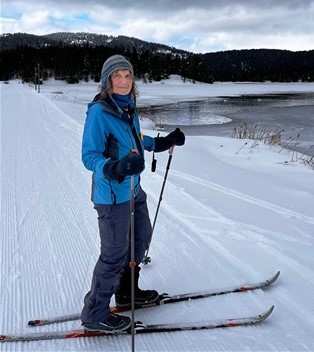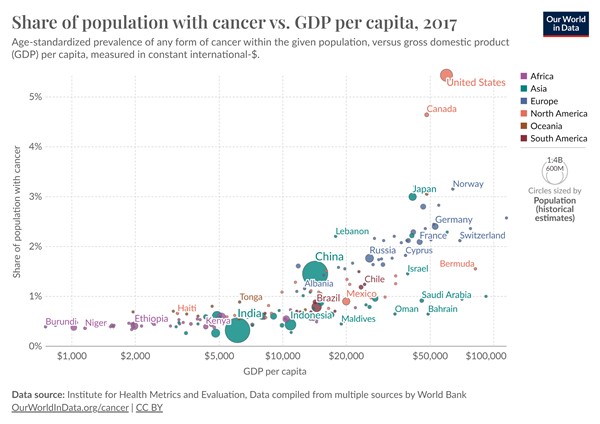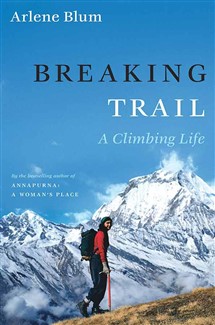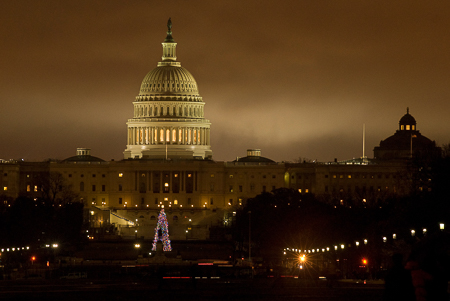March 2024 Newsletter: From Capitol Hill to Coral Reefs
Hello!
| I hope you are having a good March. I‘m enjoying the first spring flowers and warmer weather here in Berkeley.
My winter ended with cross-country skiing in Idaho and Wyoming and a visit to Washington, D.C. for Hill meetings about reducing the use of harmful flame retardants and antimicrobials. I especially appreciated visiting with my daughter Annalise, her husband David, and their delightful five-month-old daughter Lena. Now I am looking for a wilderness cabin with internet and hiking nearby for a work and walk get-away this summer. Might you have any suggestions? If so, please email me at arlene@arleneblum.com. I’m also looking forward to visiting Misool, an island eco-resort in Raja Ampat, West Papua, Indonesia in late November. This remote region with hundreds of small islands and lush healthy coral reefs, is said to have the greatest underwater diversity on our planet. There might be one spot for a friend to join me for snorkeling and/or diving. Let me know if you would like more information. During meetings on the Hill, I shared the graph below which highlights the importance of our work to inform policymakers about reducing the Six Classes of chemicals of concern. As you can see, the U.S. and Canada have much higher cancer levels than other countries. Why might that be? It is highly likely that our overuse and poor regulation of harmful chemicals in products play a role. Genetics, lifestyle, and environmental exposures all contribute to cancer risk. Research continues to link cancer to exposure to PFAS, flame retardants, bisphenols, and other chemicals in the Six Classes that we study here at our Institute. The good news is that scientists can translate their research into better chemical policies to protect our health. Science can impact policy if science speaks clearly and government listens. A new article in Nature points out with concern the two very different possible paths ahead for science, the environment, and public health depending on the outcome of November’s US election. See below for suggestions of how you can contribute your time and/or money to increase voting—essential for democracy and so very important now. One example of our science impacting government began in February of 2017 when our Institute and colleagues published Fluorinated Compounds in U.S. Fast Food Packaging, finding evidence for PFAS in nearly half of the food packaging tested. We also held a workshop bringing the PFAS problem to the attention of the food packaging industry for the first time, who immediately began to stop the use of PFAS in compostable food packaging. And this February the FDA announced a phase out of PFAS in US food contact packaging. A great example of our science and policy model Also this February, our colleagues Dr. Marta Venier and Dr. Graham Peaslee testified in the Indiana state senate in opposition to state legislation that would redefine PFAS so that most polymers and gases, two major uses, were no longer considered PFAS. To oppose this new and narrow definition of PFAS in Indiana, Ariana and Lydia from our Institute initiated and led a consensus statement, signed by more than 170 scientists to date, stating that PFAS definitions must be complete and supported by science in order to protect human and ecological health. A week later, the legislation was tabled. Please read Breaking Trail: A Climbing Life, my memoir of mountains and molecules, or better yet, suggest it to your book group. I just learned that Breaking Trail might be going out of print and your purchasing it or recommending it to others would help keep it in print. “Complemented with breathtaking personal photos and detailed maps, Breaking Trail is a moving account of how one woman overcame adversity to become one of the world’s most famous climbers, and a testament to the power of taking risks and pursuing dreams.” Finally, the 41st annual Berkeley Himalayan Fair is Saturday and Sunday May 18-19, 2024 in Live Oak Park near our office in North Berkeley. Please join us for Himalayan art, crafts, food, music, and dance. I started the Fair forty-one years ago after enjoying many festivals as I trekked for ten months across the Himalayas. This is a fun event for all ages. I hope to see you there. Kind regards, P.S. I would like to hire a part-time personal assistant here in Berkeley who is a creative problem solver with a broad array of computer and practical skills, at least three years of work experience, and can assist me in person on weekends and/or evenings for several hours each week. Please email me at arlene@arleneblum.com if you might be interested or if you would like to suggest someone for this position. |
Supporting DemocracyMy recent D.C. meetings with very capable, hard working, and committed Senate and House staff members demonstrate to me once again the importance of Some effective organizations:
For thoughtful insights into the daily news and its connection to American history, please check out the free Letters from an American by historian Heather Cox Richardson. I look forward to reading them every night and learning about both the latest news and our country’s history. |
Berkeley Himalayan Fair, May 18 & 19, 2024Please join me at this year’s annual Himalayan Fair. You are invited enjoy the music, dance, food, crafts and arts of the Himalayas at the Fair, which will be held in Live Oak Park, 1300 Shattuck Avenue in North Berkeley, California on Saturday and Sunday May 18 and 19. The fair’s profits go directly to the Himalayan regions as donations to orphanages, health clinics, and other Himalayan charities. Please stop by the Green Science Policy Institute booth under the big tree northeast of the stage to enjoy the entertainment. Contact me if you’d like to help out with the fair. I describe starting the Fair after returning from the Great Himalayan Traverse in my memoir, Breaking Trail. More information about the Himalayan Fair is here. |
Soap & Water are BestOne of our goals this year is to reduce the widespread use of harmful antimicrobial sprays and wipes in gyms and other public places. Since the pandemic, their overuse has skyrocketed. Not only are the chemicals (in large part quaternary ammonium compounds or QACs) in these products linked to health harm, but they provide no benefit over plain soap and water for routine use in public places. Don’t believe this? Check out the CDC’s guidance for cleaning facilities that says the same. For example, according to the CDC, cleaning with “soap or detergent and water removes most types of harmful germs (like viruses, bacteria, parasites, or fungi)” from surfaces. Get in touch if you would like help by educating your local gym about the benefits of soap and water over QACs and other disinfectants or if you have other ideas for addressing this problem. |
Turtles, Tigers, & Bears Polluted with Flame Retardantsby Maddie Dolan and Lydia Jahl What do wild boars, red pandas, bald eagles, and phytoplankton all have in common? These animals are all contaminated by harmful flame retardant chemicals. Maddie, our summer intern in 2023, put together this map with over 150 species of wild animals across all seven continents who were found to have toxic flame retardants in their bodies—and this is still only a small fraction of peer-reviewed studies finding such contamination. This unfortunate exposure occurs because of decades of the use of flame retardants in products like vehicles, electronics, furniture, insulation, and tents to meet flammability standards that often do not increase fire safety. Flame retardants travel through air and water to reach all corners of the world, where they can cause cancer, endocrine disruption, developmental, and other health harm in wildlife and humans. The continuing substitution from PCBs and PBDEs to other flame retardants like organophosphate esters and chlorinated paraffins that leads to this world wide contamination harms wildlife, and also occupies scientists and regulators trying to chase down chemicals one by one. Our map here demonstrates how ineffective and slow chemical policies impact living creatures on a global scale. Please support policymakers who support effective chemical regulation so that chemicals are tested before they are used and end up in wildlife and in us. |
Healthier Tents At Lastby Rebecca Fuoco The recent The No Toxics Tent Act fixed an outdated flammability code that led to the addition of unneeded and harmful flame retardants to camping tents and children’s play tents and tunnels since the 1970’s. We thank Assembly member Rebecca Bauer-Kahan and Lexie Gritlefeld of the California Outdoor Recreation Partnership (CORP) for their invaluable contributions to this legislation. Most testing finds no significant fire safety benefit to adding flame retardant chemicals to synthetic fabric tents. However, extensive data shows health harms from these chemicals, from cancer to lowered IQ. You can learn more about the history in this blog from product safety attorney Neal Cohen. Due to California’s large market size, most manufacturers have been using flame retardants to meet the state’s code for all of their tents sold in North America. Therefore, with the updated regulation, we hope most tents sold to Americans will no longer be treated with unnecessary and harmful chemicals. Wondering if your tent has flame retardants? Tags stating the tent’s fabric “meets CPAI-84” usually indicate the use of flame retardants. |
Green Science Policy Institute in the Newsby Rebecca Fuoco Below are recent news articles, blogs, podcasts, newsletters, and more that have featured Arlene’s work based on our communications strategy:
|
CalendarMay 18 & 19, 2024: October 9, 2024: |








